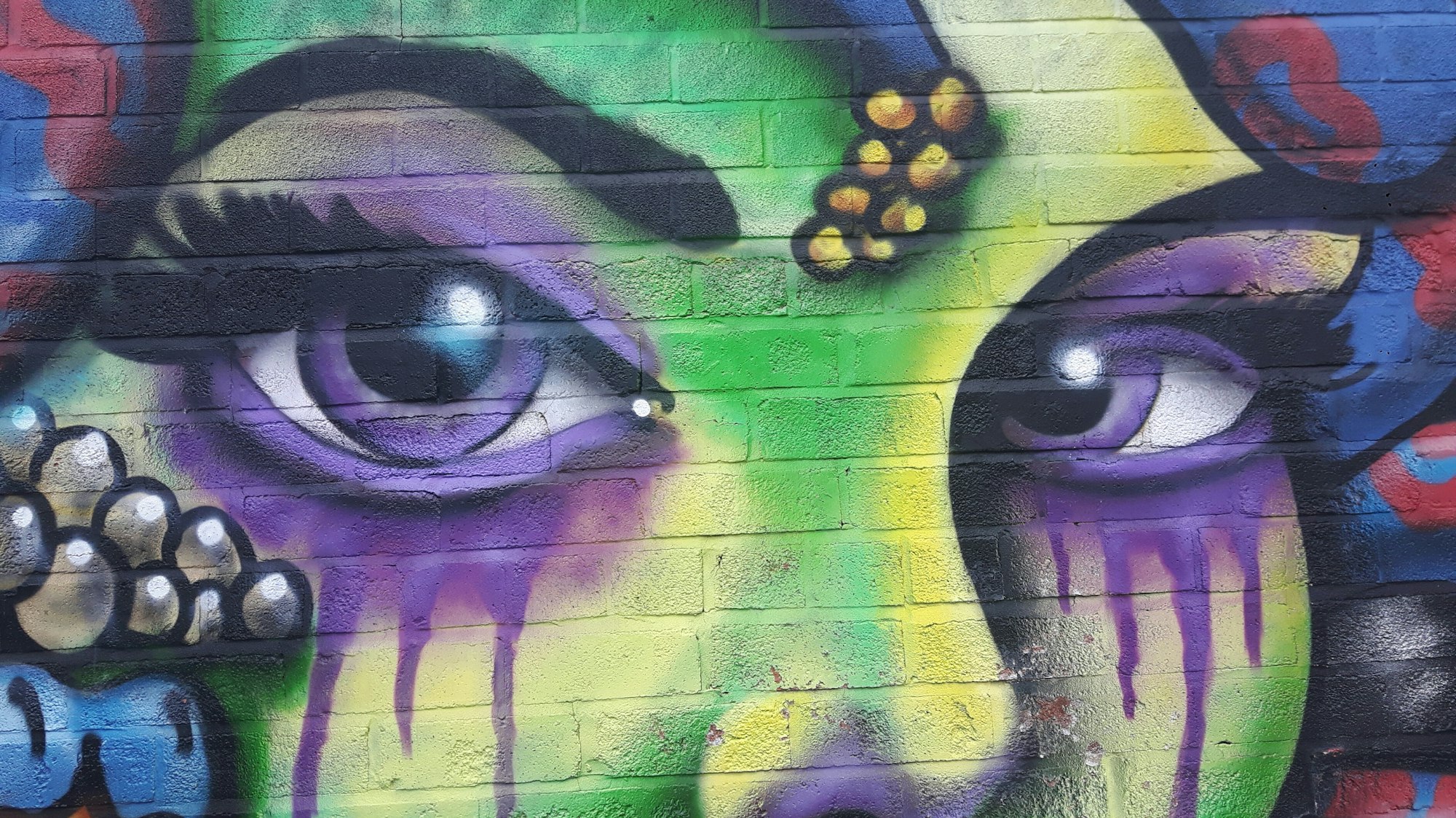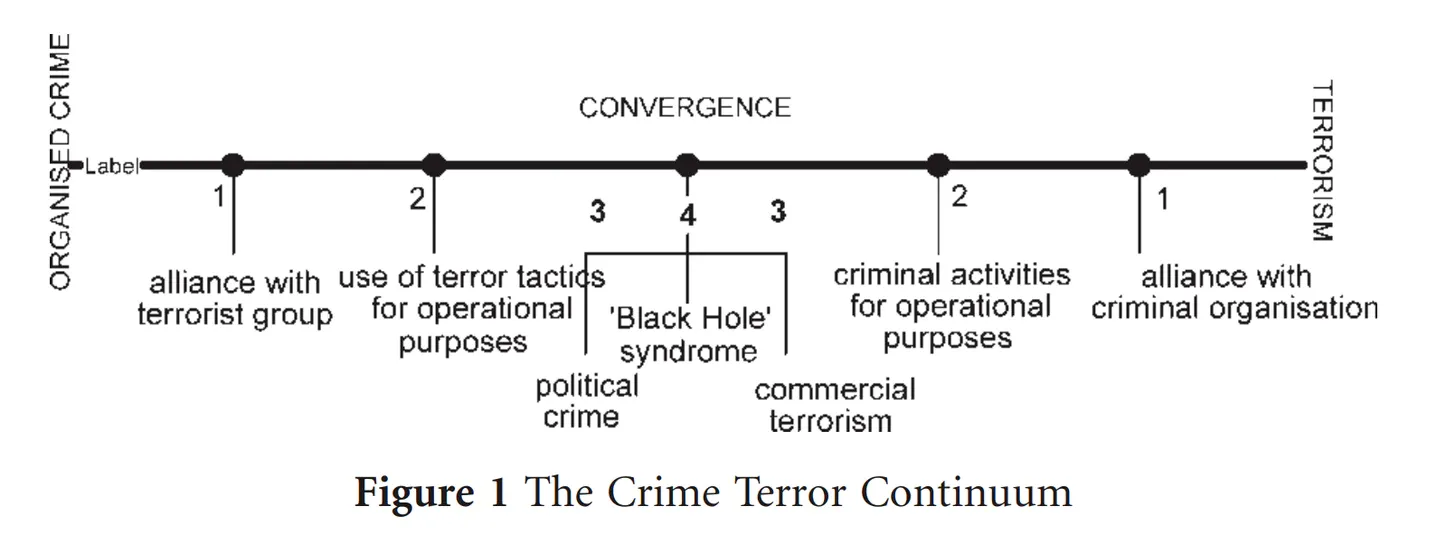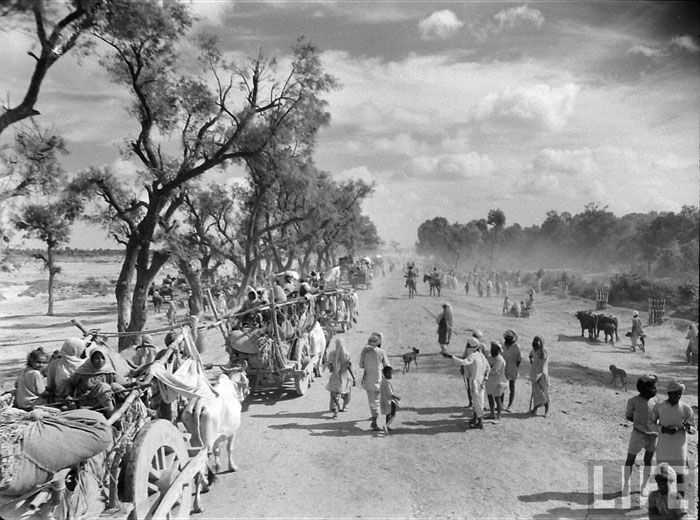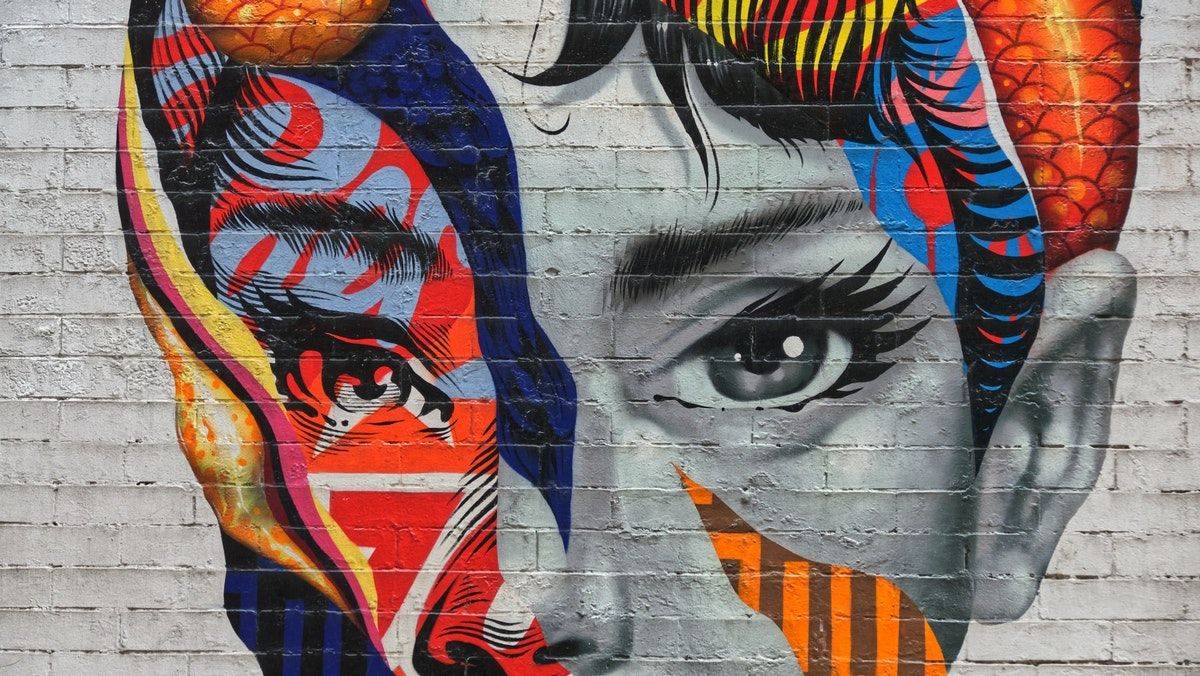Drishtikone Newsletter #343: Pakistan's Strategic Culture and Its Situation
Pakistan has been down before so what is different this time? A country built ground up for terror is facing a different India. Let us see.

In 1993, then one of the top US airlines, Continental Airlines started a subsidiary - Continental Lite - to compete with low-cost carriers like the Southwest. It soon expanded to 45 cities and at one point accounted for two-thirds of the Continental airline's flights and one-third of its capacity. By 1995, the experiment had failed miserably and had accumulated losses of up to $300 million!
Even when Continental Airlines was one of more successful airlines till then, why was it not able to do what Southwest airlines could do?
Structure.
Southwest was built ground up for low-cost operations. The turnaround time for their flights was aimed at 10 minutes and settled at 30 minutes. The pandemic changed it though. But objectives like lowest turnaround times meant using the peculiar way of a boarding method with no assigned seats or order (which was 47% faster than the standard method) and creating processes within the company that supported such procedures and objectives.
Societies and countries, quite like organizations choose a way of life. Their own social objectives. Those objectives and ways lend themselves to certain structures.
Western societies, for example, selected a way where the strongest and the wealthiest would win and the weaker and poorer would be sidelined. The very structures of economic prosperity where the entire information framework was aligned to record clearly the ownership of property and economic assets were geared very differently.
Peruvian economist Hernando de Soto has written about how formal private property rights were the key to economic prosperity. However, it is also true that once every piece of land and asset has a unique, enforceable, and tradeable ownership, the space for commons diminishes. And with that goes the ability of the poor and homeless to survive.
Structures as we are calling them for societies that want rich billionaires to define their way of life versus say, a group of monks who live off of commons are very different.
So, when Pakistan went about unleashing the veiled invasion of India in 1948 with money issued from its treasury but fashioned as a tribal assault, to change the boundaries, it set into motion certain structures.
Structures that were fashioned by processes like hawala, jihad, and a violent enterprise that has plausible deniability built into it.
Whenever the economic front needed a boost, these structures were tapped to keep the engine of the society going. Traditional economic methods - of increasing industries, improving the financial sector, and creating faster and larger supply chains - were never looked into.
You see, the very structures of the Pakistani society did not lend themselves to a normal society or country.
Using and milking the peculiar structures that helped set a surreptitious violent enterprise kept giving returns and sustenance. Until one day, they didn't.
With no industry to speak of, hardly anything to export, and huge imports fueled by rich lifestyles built on unaccounted wealth earned from the vast violent enterprise - Pakistan is in a strange position. It is hurtling to its death but cannot change its direction.
That's the power of structures.
Strategic Depth - Building illicit and terror social and economic structure from the ground up
In early 1991, the man who spearheaded the "Strategic Depth" theory of using terror against India as a geopolitical weapon - General Aslam Beg Head of the ISI - approached the then Prime Minister Nawaz Sharif to discuss ways to bolster the funding for its terror activities. The focus was Heroin.
Pakistan's army chief and the head of its intelligence agency proposed a detailed "blueprint" for selling heroin to pay for the country's covert military operations in early 1991, according to former prime minister Nawaz Sharif. In an interview, Sharif claimed that three months after his election as prime minister in November 1990, Gen. Aslam Beg, then army chief of staff, and Gen. Asad Durrani, then head of the military's Inter-Services Intelligence bureau (ISI), told him the armed forces needed more money for covert foreign operations and wanted to raise it through large-scale drug deals. "General Durrani told me, 'We have a blueprint ready for your approval,' " said Sharif, who lost to Benazir Bhutto in elections last October and is now leader of the opposition in parliament. (Source: Washington Post)
Narco-terrorism as a concept may have been new in the geopolitical space, but its ideological underpinning and practical execution were put in motion by Pakistan's ISI three decades back.
Pakistan's very existence is predicated on how it has seen itself vis-a-vis India. Based on those assumptions and ideological moorings, the entire Strategic Culture, as Christine Fair calls it, has emerged. Four themes have been identified in Fair's analysis of the Pakistani establishment's literature:
- Pakistan is an insecure and incomplete state
- Afghanistan is the source of instability
- India rejects the two-nation theory and seeks to dominate or destroy Pakistan
- India is a regional hegemon that must be resisted
These four themes inform the Pakistani establishment's decision-making framework.

Strategic Culture, as defined by Alistair Iain Johnston, is an integrated system of articulating the deepest values of the "establishment" such that they drive every aspect of social and governance interaction.

The Strategic Culture of any country is based on the grand strategy articulated by the establishment and how the subsequent questions that emanate out of that are approached by that establishment and the society at large.

Quite simply -
This will be an important tool for us to understand why Pakistan is in the position where it is today.
Christine Fair shares an interesting table that lays out the actions taken to operationalize the strategic beliefs based on how the Strategic Culture was consciously defined by Pakistan.

Once playing the victim as the disadvantaged competitor became the over-riding belief in a geopolitical arena where oneupmanship was the goal, the alternatives were clear - asymmetric warfare.
Strategic Depth of Aslam Beg was the answer. And Narcotics and other illicit economic choices became the way to operationalize that objective.
This resulted in an economy that was built ground up to be run on illicit enterprises. A major portion of Pakistan's GDP was said to come from activities linked to fake currency printing, narcotics, illegal arms supply, and terrorism.

Just the Fake Currency Notes (FCNs) "business" that Pakistan has been running, more successfully before demonetization than after it, is a way to earn profits out of the larger Indian economy. Rs 500 crores annually to be precise!

It is like infiltrating into a larger - more legitimate economy built upon industry and business - and earning a piece of its pie via illicit piggybacking.
That is why the business of fake currency notes changed its course from being just a way to fund the terrorists to become a way to undermine the economic structure of India.
Military intelligence reports flowing out of Jammu and Kashmir too reveal a changing pattern. “Earlier, fake currency was handed out to allow terrorists to sustain themselves when they entered the Valley. However, in the past two years, it has taken on a larger strategic objective of hurting India’s economy,” says a senior army official. In Punjab, the seizures of counterfeit Indian currency have almost doubled in the last two years from 44 in 2006 to 86 in 2008, while the quantum of dirty money rose from Rs 99 lakh to Rs 1.20 crore in the same period. It’s the same story for Uttar Pradesh and Pune where fake currency cases doubled in 2008 compared to 2007. (Source)
This was the Fake Currency business. Now let us look at the Hawala business.
Hawala business and Terrorism
In Hawala too, India is a major target of Pakistan's illicit money transfers and laundering enterprise. Almost all of it going to funding of terror activities.
India received at least $14.36 billion from Pakistan in the form of illegal remittances, through hawala channels, in the last three years, according to estimates of the World Bank. Intelligence agencies fear that a large part of this money is being used to finance terrorists, separatists and different radical movements in India. A major chunk of this money was transferred through unrecorded and unmonitored channels including informal trade and cross-border smuggling. India and Pakistan have not had any framework to carry out direct financial transactions ever since the 1965 war. According to Reserve Bank of India figures, a few thousand Indians send a little over $1 million to India every year as remittances through official channels that include Indian missions based in Pakistan and through third countries. Reliable sources in the RBI told this newspaper that since 2007, at least $3-4 billion have entered India every year directly, through informal trade, which is not part of the official transaction records. Officials warned that terrorist organisations in Pakistan are sending money to their units in India using these informal trade routes. (Source)
So how does hawala play a role in the Pakistani economy? Do the illegal money flows help the Pakistani economy?
Let us look at a very interesting situation unfolding in front of our eyes just as the Pakistani economy is tethering on bankruptcy.
In April 2022, Pakistan created history when its monthly remittances from "overseas Pakistanis" jumped 12% to a record high of $3.1 billion!

Remittances from the overseas Pakistanis are considered to be the "backbone of the Pakistani economy."

Which is interesting.
Because Pakistanis have increasingly been deported from all the countries where they traditionally seek employment.

In fact, the official website of the government of Pakistan also confirms the trend. From a high of 946k (2015), the number of emigrants has fallen to the 2007 levels of around 286k.

So how do you explain this strange situation - While the emigration falls to the lowest levels in 15 years, the remittances increase to a record level?!
Tara Kartha of "ThePrint" shares an interesting insight.

Remittances are a very common tool that is used by organized crime syndicates for money laundering to fund their activities. FATF report on Money Laundering shares the modus operandi of the whole operation.

So, something that is couched in legitimate economic terminology by the Pakistani establishment and the government is actually an operation that is not just the "backbone of the Pakistani economy" but also the "backbone of its terror activities".
In another report, FATF explains how the Pakistan Government's taxation laws, Export-Import business, and private organizations use creative ways and Alternative Remittance Systems (ARS) to do money laundering.

That is how the link between Hawala, Remittances, and Terrorism works. And it is not a small quantum of money that we are talking about when it comes to Pakistan.
$5 bn in that country!
Pakistani officials and analysts said the popularity of the hawala system, which began long before the advent of Western banking in the region, makes eliminating it -- or even regulating it -- nearly impossible. Although it is technically illegal here and in most other nations, as much as $5 billion a year is estimated to flow through the Pakistan's hawala networks each year, more than the combined value of all bank wire transfers. "To end the hawala system, you have to identify the persons who are involved in it," said A. R. Kemal, an economics professor at Quaid-I-Azam University in Islamabad, the Pakistani capital. "But how do you prove people are hawala dealers? There are no records whatsoever. There is no paper trail." (Source: Washington Post)
Hawala is central to the running of a terrorist enterprise.
You can read details of the Congressional Committee discussions on "Hawala and Underground Terrorist Financing Mechanisms", and the contents of "Money laundering and the financing of terrorism - European Union Committee" apart from the FATF report on Hawala and Terrorist Financing and Money Laundering.
So, Hawala is the central and critical piece of the entire terror enterprise that runs within the Islamic world, promoted primarily from Pakistan. But how does Hawala impact the traditional economy?

The monetary side of the economy is badly hit and changes that may need to be made for corrections in an economy become very difficult, if not impossible.
The Crime-Terror Continuum
There is a continuum that aligns drug crimes with terrorism with respect to major players in the world of illegal activities.
Tamara Makarenko shares a continuum of crime and terror world in her article - “The Crime–Terror Continuum: Tracing the Interplay between Transnational Organised Crime and Terrorism”

The main idea was that organized crime and terrorism exist on the "same plane" and at some point converge together. The fulcrum of this entire continuum is the convergence when a single entity is engaged in both criminal and terrorist characteristics.
For example, the Pakistani government was running criminal activities until the 1980s when it procured Nuclear technology with the active connivance of the then US government and a rogue scientist.

The criminal infrastructure set up, the knowledge gathered, and structures constructed globally came in handy for furthering the terror enterprise. But more importantly, the procurement of nukes and nuclear technology by the Pakistani establishment, which was the kingpin of criminal activities, became the basis of Pakistan's stronger backing of terrorism as statecraft.
Pakistan’s all-powerful military establishment—which includes the rogue Inter-Services Intelligence agency—is loath to sever its cosy alliances with terrorist groups. It would prefer to continue nurturing armed jihadists as a force multiplier in its low-intensity asymmetric wars against neighbouring countries. Pakistan’s nuclear weapons enable this approach, because they shield its military and state-nurtured terrorist groups from retaliation. This constraint is reflected in India’s response to the Pakistani military’s long-term strategy of inflicting on India ‘death by a thousand cuts’. Pakistan’s protracted terrorism-centred asymmetric warfare has, cumulatively, proved costlier for India than any past full-fledged war on the subcontinent, including the 1971 war that resulted in the creation of Bangladesh. But, as India’s patience wears thin, a limited war that calls the Pakistani generals’ nuclear bluff is no longer inconceivable. (Source: The Strategist)
When the criminals get access to weapons of mass destruction, as the Pakistani military establishment got, they become unstable players who can go to any length to achieve their objectives. That is why terrorism came naturally to Pakistan's military establishment. A version of such actions was after all used to orchestrate the partition of India.

Narco-terrorism: When Drugs fund Terror
This brings us back to where we started from - Narco-Terrorism. When General Beg shared with PM Sharif was the blueprint of what the future of terror would look like. A self-sustaining model that would have its base in Afghanistan - the haven for poppy.
We had discussed the world of Narco-terrorism in our newsletter edition # 136.

The quantum of narcotics trade is huge globally!

That's almost 5% of the world economy! In drugs flowing out of Afghanistan is in billions and most of it is controlled by Pakistan's ISI.
In its latest assessment of the impact of the Taliban’s return, the Interpol said the opium economy in Afghanistan could be pegged between $1.2 billion and $2.1 billion a year. The Taliban's share ranges between $100 million and $400 million, and could go as high as $1.5 billion. (Source: The Week)
The proceeds from the drug trade are directly used to fund terror in India and destabilize the country.
Afghanistan and the NWFP of Pakistan are the biggest producers of opium in the world, which generates huge sums of money in the international market. The drug proceeds are used by the Pakistan government and the non-government agencies to destabilise India. These two issues are vital in the regional politics of South Asia and the security environment of India. (Source)
Something that the current Chief of the Indian Army has confirmed.
Army Chief General Manoj Pande on Sunday suggested the narco-terror nexus was being pushed by country's western adversary through dropping of drugs and weapons in Jammu and Kashmir and other states but the force was ready to answer these threats in a resolute manner. (Source: Business Standard)
How does that impact India? Here is a very troubling statistic.

So Pakistan's terrorism activities are directed toward India, and its narcotics trade also profits mostly from India!
What is common about all the activities of Pakistan? Let us look.
India floated Pakistan - always!
Behind all these activities there is a common thread. India.
There is something that one needs to realize about this whole illicit economic enterprise that Pakistan runs.
They almost in every way have profited from the Indian economy.
Let us take a look:
- Rs 500 crores of annual profits made in Fake currency notes from India by Pakistan, besides destroying the economy
- Over $14 billion was pumped into India by way of Hawala - which again goes into terrorism but also is used for facilitating other crimes in India. The profit margins are around 3% (Source)
- Over 80% of all drugs coming to India come from Pakistan.
Do you see how the structures within the Pakistani society and economy have been built ground up for illicit activities that are geared against India?
Bankrupt Economy and steadfast terror enterprise
Where is the Pakistani economy now?
Bankrupt.
Currently, Pakistan’s inflation rate has accelerated to 13.37% – the second-highest in Asia after Sri Lanka, which recently declared bankruptcy and at present is embroiled in political turmoil. Moreover, as Pakistan repays loans to avoid burgeoning interest rates, the State Bank of Pakistan reserves have decreased by $190 million to $10.308 billion – enough to support approximately two months of imports. In addition, the rupee is trading at its lowest, and the bourse also witnessed one of the steepest drops in its history as it tumbled five percent in just over two months. Finally, commodity prices are also soaring, and the weekly sensitive price index that defines inflation is 15.85% up. (Source)
With not enough cash, high debt and inflation, declining exports, high imports and not enough power or oil - we are looking at a recipe for disaster.
This is not the first time that Pakistan has faced economic troubles. After all in 1970s it has an economy where economic growth fell from an average of 6.8 percent per annum in the 1960s to 4.8 percent per annum on average in the 1970s (Source)
The 1980s were a bit better but the 1990s started the downward trends. Poverty nearly doubled from 18 to 34 percent, inflation rate had reached 14% and GDP growth fell to under 2%!

in the 2000s, the economy was liberalized and after a better performance in the first half, it again started faltering post, Musharraf.
SO what is so different this time?
Why is it that its own former PM Imran Khan is predicting a balkanization of the country?
Because this time it is different.
What is different this time?
As we saw, all through its history, Pakistan has either traded its territory and/or people to fight others' wars and earn profits off of it or used India as the bulwark of its own economy by profiting from its Indian activities, while destroying India's economy in return.
All through these years, the Indian governments were either willing participants - because the politicians were compromised or they were silent spectators.
This is the first time in the subcontinent's history that the Indian government is putting a stop to the profiteering by Pakistan off of India.
Demonetization hit many of these activities badly.
Hawala operations were brought to a stop - at least temporarily. Enough for the Indian agencies to plan their tactics and interventions.

So was the fake currency business.

These activities have picked back up but the Indian agencies have been closely monitoring. That is why the detection of fake currency, for example, has increased in recent years.

So, this time, the industry in Pakistan has been destroyed impacting exports, the imports are still high, there is no one to give doles (Saudis, US etc have distanced themselves), and India - the ready resource - is no longer open to profiteering and available as the "lifeline the last resort".
That is the difference!
Video Corner: "I am not on the fence. I am on MY ground."
This interaction of Dr. Jaishankar at Globsec 2022 is very instructive. What the Minister said is being circulated everywhere in chunks - so we shared the entire discussion in full.
What one must ponder on is not what Dr. Jaishankar says here. But why? How has the tone from the Indian foreign ministry become so confident and even combative when comes to Europe?
Is it a reflection of the underlying shifts in the global world order? What is fueling that change in the global order and how is India taking a lead in it?
These are the questions to ponder on while you analyze each answer from the minister.
If you like our content and value the work that we are doing, please do consider contributing to our expenses. CHOOSE THE USD EQUIVALENT AMOUNT you are comfortable with.
If you like this post - please share it with someone who will appreciate the information shared in this edition.
Today’s ONLINE PAPER: Check out today’s “The Drishtikone Daily” edition. - THE DRISHTIKONE DAILY









Comments ()